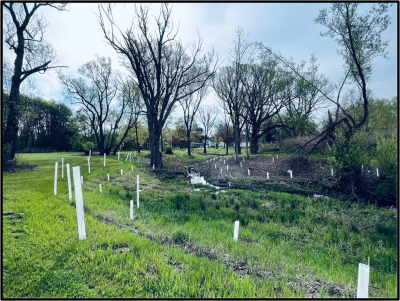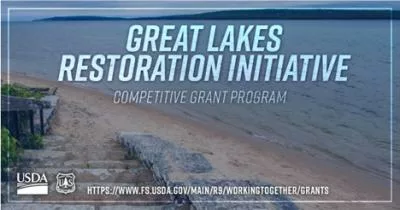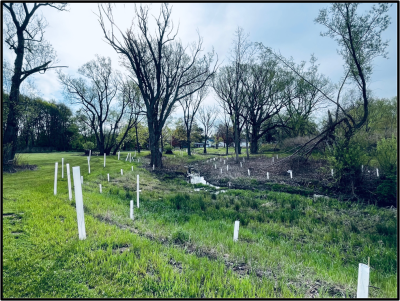Category: Other
The Kincardine Independent
The Grey Bruce Public Health board of directors started their July meeting with discussion on a piece of correspondence about advocating for a better income for vulnerable citizens, with the … Continue reading Board of health endorses motion for increase in OW and ODSP support
The post Board of health endorses motion for increase in OW and ODSP support appeared first on Kincardine Independent.
Forest Service Grants Available for Forest Restoration Projects in the Great Lakes Basin
Forest Service Grants Available for Forest Restoration Projects in the Great Lakes Basin
josterme01
Fri, 08/02/2024 – 2:04 pm

The USDA Forest Service is requesting applications for the Fiscal Year 2024 Great Lakes Restoration Initiative (GLRI) Grant Program. This program supports reforestation, ecosystem restoration and forest health improvement in the Great Lakes Basin through an agreement with the U.S. Environmental Protection Agency.
We are announcing and awarding funding through two grant opportunities:
(1) Cooperative Weed Management Areas (CWMA) Request for Applications funds partnership work to address invasive plant species that pose significant ecological threats in the Great Lakes Basin.
(2) The Forest Restoration (FR) Request for Applications funds projects that
- Mitigate Forest Insect and Disease Impacts through targeted reforestation and forest protection,
- Reduce Runoff from Degraded Sites through Green Infrastructure that includes trees, or
- Restore and Connect Coastal and Riparian Forest Habitats.
We anticipate that up to $1 million in new funds will be available for the CWMA grant, and $5.2 million for the FR grant.
Application Details
Eligible applicants can apply by 6 p.m. Eastern, September 18, 2024 on Grants.gov by searching opportunity number USDA-FS-GLRI-CWMA24 (for CWMA) or USDA-FS-GLRI-FR24 (for Forest Restoration).
Applicants can be state agencies, sovereign Tribal Nations, nonprofit organizations, educational institutions, and local governments that work within the Great Lakes Basin of Illinois, Indiana, Michigan, Minnesota, New York, Ohio, Pennsylvania, and Wisconsin.
Cooperative Weed Management Area (CWMA) funding requests must be submitted through a CWMA or similar organized partnership that manages invasive plants across jurisdictional and land ownership boundaries within a defined area.
We encourage all applicants to work with their State forestry agency to determine how their project fits into the goals and objectives of the State Forest Action Plan.
Additional notes:
- Applications must be prepared and submitted through Grants.gov by 6 p.m. Eastern on September 18, 2024.
- A webinar for prospective applicants was offered for each opportunity. Recorded webinars will be posted on the Eastern Region grants webpage.
If you have questions contact GLRI grants contact Erin Barton (erin.barton@usda.gov); (612) 476-5849 for more information.
The Kincardine Independent
Bruce County council passed a motion July 4 to “use funds from the Gordon Henry Amrell Trust to design, create and install murals, up to a maximum amount of $70,000” … Continue reading Brucelea Haven to get new murals
The post Brucelea Haven to get new murals appeared first on Kincardine Independent.
The Kincardine Independent
If you’ve been affected by the loss of the Kincardine laundromat which was destroyed by fire on July 6, local social service agencies and programs are working to offer support … Continue reading Community groups exploring options for laundry services
The post Community groups exploring options for laundry services appeared first on Kincardine Independent.
The City of Dunkirk, New York awarded for Lake Erie Green Infrastructure Project
The City of Dunkirk, New York awarded for Lake Erie Green Infrastructure Project
josterme01
Tue, 07/23/2024 – 1:35 pm

Thanks to support from the Great Lakes Restoration Initiative (GLRI) through the Lake Erie Green Infrastructure Project, the City of Dunkirk, NY was recognized by the Great Lakes & St. Lawrence Cities Initiative as one of two cities to win the Wege Small Cities Sustainability Best Practices Award. The Wege Award highlights small cities, with populations of under 100,000 and with limited resources, who demonstrate leadership in tackling water quality issues while ensuring economic vitality and social equity. This award specifically recognizes meaningful projects that balance economic, social, and environmental aspects of protecting water quality that could be used as a best practice inspiration for other cities. In addition to being recognized as a winner of the Wege Award, the City of Dunkirk received a $3,750 award.
In 2022, the City of Dunkirk partnered with the Lake Erie Watershed Protection Alliance (LEWPA) and Chautauqua County Soil and Water Conservation District (SWCD) on the Lake Erie Green Infrastructure Project. Dunkirk’s project focuses on stormwater runoff from Hyde Creek onto the Wright Park Beaches and a stormwater outfall onto Main Street Beach. The Wright Park part of the project offers an opportunity to restore a wetland ecosystem adjacent to the open water of Lake Erie at Wright Park and address the flooding concerns at Wright Park Boulevard, while providing benefits to the bathing beaches of Wright Park. The Main Street Beach part of the project will re-route stormwater into an engineered wetland in an area of the Dunkirk Harbor where invasive knotweed and phragmites will be eradicated from the site and the new engineered wetland will be planted with native species.
The Wright Park and Main Street beaches are important amenities within the City of Dunkirk. The green infrastructure practices for this project were developed and designed with City of Dunkirk input to ensure that the look of the green infrastructure practices will be aesthetically pleasing once constructed.
The project applies green infrastructure practices to a combined 235-acre area and will help slow the flow of over 46,000,000 gallons of untreated stormwater runoff annually, which will reduce sediment and pollutant input into the Great Lakes system and reduce algal blooms in nearshore areas, as well as improve the habitat for fish, wildlife, and pollinators.








